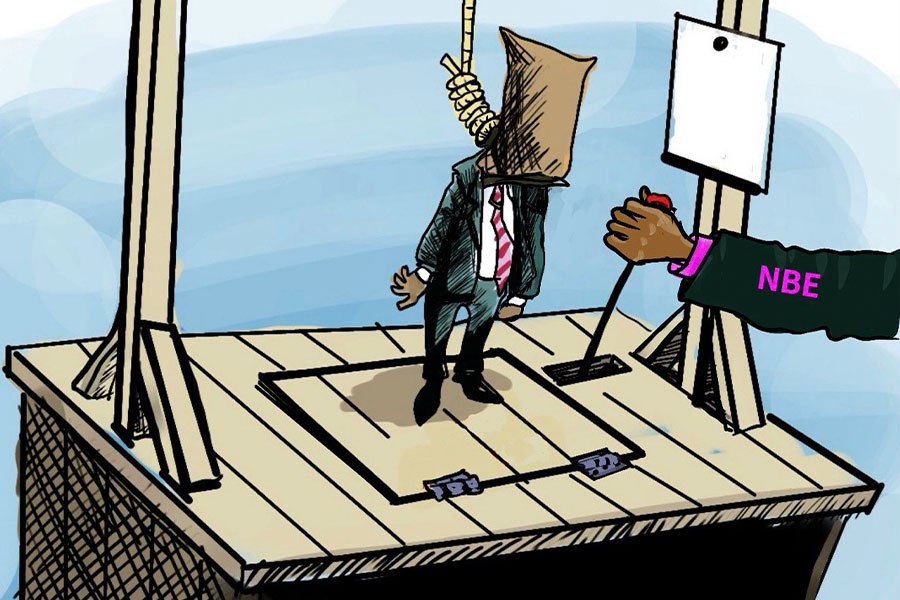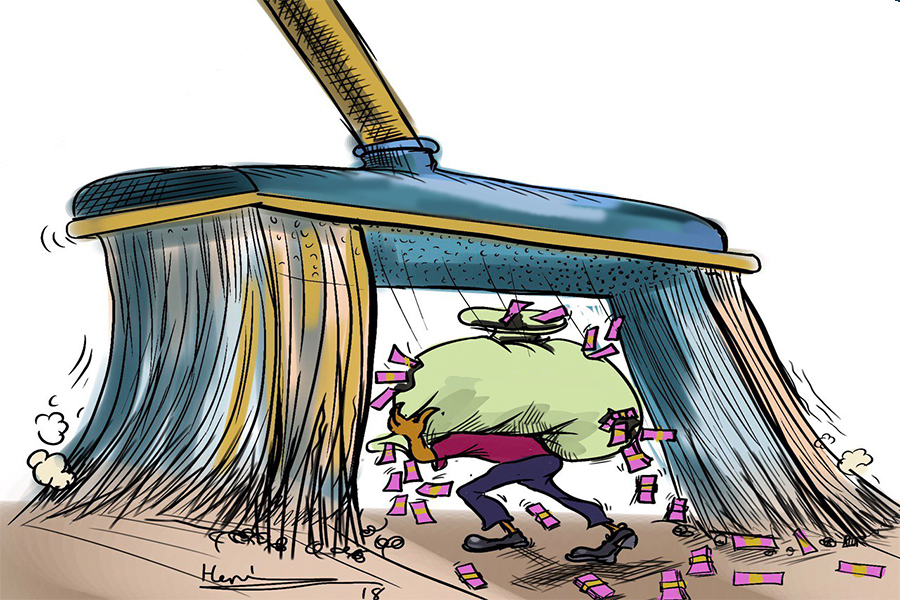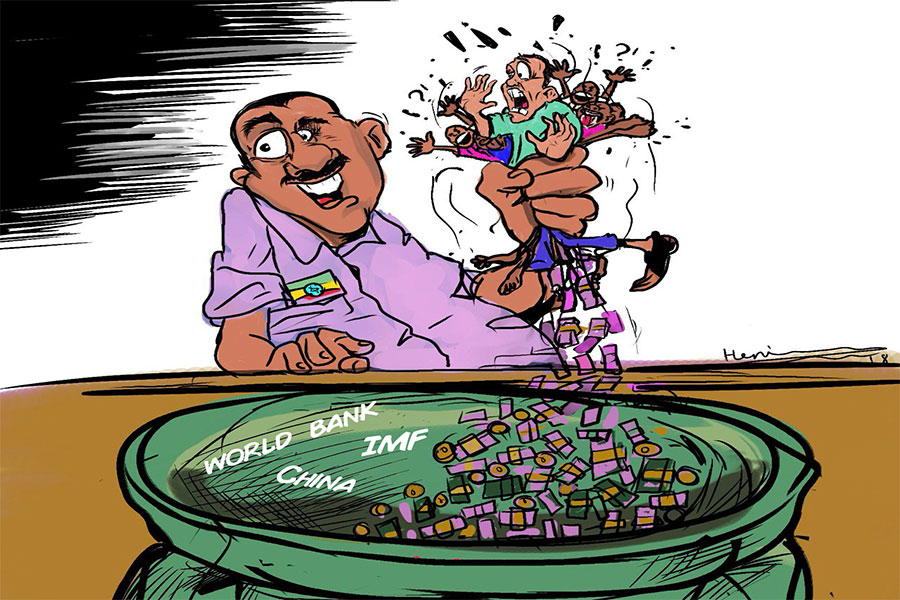
Photo Gallery | 180394 Views | May 06,2019
Mar 30 , 2025.
The Birr (Brewed Buck) edged slightly to stability against the U.S. Dollar (Green Buck) last week, revealing modest shifts in a market often characterised by subtle moves rather than dramatic swings. Beneath the surface, however, a growing divide between state-owned and private banks uncovered a brewing competition over foreign currency supplies.
Lion International Bank and ZamZam Bank emerged last week as the most assertive private players, nudging their buying rates close to 131 Br a dollar, markedly higher than their competitors and above the rates offered by the state-owned Commercial Bank of Ethiopia (CBE). Their aggressive positioning widened the gap, leaving the big five private banks — Awash, Abyssinia, Wegagen, Dashen, and Zemen— sailing around 128 Br, well below the upper limits of the market.
The average buying rate across the banking industry settled near 128.60 Br, while selling rates averaged approximately 130.50 Br. At the extremes, Lion and ZamZam offered the highest buying rates, while Nib Bank momentarily stood out at the low end, briefly dropping its rate to around 126 Br. Most other banks found themselves clustered within this spectrum.
CBE’s decision to maintain its buying rate relatively steady created a notable divergence, with private banks occasionally offering premiums nearly eight Birr higher. According to analysts, CBE's cautious approach could be part of a broader policy objective of preserving foreign exchange reserves, even if this restraint inadvertently consolidates competitors willing and able to offer better terms. Observers believe private banks pushing towards 131 Br do so in response to tightened liquidity conditions and rising demand for the Green Buck.
Bankers themselves acknowledge the rationale, stating their need to secure sustained foreign currency inflows by providing attractive rates to sellers. Still, the week's incremental adjustments appeared more about fine-tuning positions than marking shifts in market dynamics.
These cautious maneuvers demonstrated the current subdued state of the foreign exchange market, where forex inflows remain limited, and the National Bank of Ethiopia’s (NBE) interventions have been carefully measured. Despite minor volatility, the Birr's slow depreciation generally matched market expectations, as even banks making noticeable rate adjustments avoided triggering major disruptions.
The National Bank of Ethiopia (NBE) itself displayed an active posturing, with daily spreads fluctuating between 0.36pc and 1.42pc, notable variations in a market otherwise moving cautiously within narrow bounds. Analysts are divided on interpreting these moves; some view them as short-term adjustments intended to manage interbank currency flows, while others believe they may reflect an evolving policy position driven by liquidity conditions or specific sector demands, especially within the import-dependent economy.
Among private banks, the Bank of Abyssinia (BoA) drew attention by briefly narrowing its currency spread to 1.6pc on March 27, only to return to the standard two percent spread by week's end. Awash Bank adopted a similar tactic, briefly testing narrower spreads early in the week before reverting. Market analysts see these subtle alterations as internal calibrations rather than noteworthy shifts, moves intended to optimise foreign exchange strategies without unsettling market stability.
Individual bank actions also provided insights into the delicate manoeuvring underway. Nib Bank’s sharp rate cut from around 128.3 Br down to 126.27 Br on March 29 surprised some market watchers, who speculate this sudden adjustment may reflect specific liquidity pressures. Tsedey Bank steadily increased its buying rate, moving from approximately 130.1 Br to 130.3 Br by the end of the week, signalling a gradually heightening effort to attract foreign currency.
On the selling side, banks largely adhered to rates between 130 Br and 133 Br. Here, too, the Central Bank distinguished itself by incrementally adjusting its selling rate from around 129.5 Br at the start of the week to approximately 130.4 Br midweek, continuing its careful management of currency flow.
The week's quiet yet steady depreciation unveiled how carefully banks weigh immediate pressures against long-term policy aims. Lion and ZamZam’s upward drift signalled their readiness to push rates higher in response to any further tightening of supply or incremental rise in demand. The conservative posturing of the big five private banks implies a choice favouring stability and risk management over immediate market share gains.
CBE’s reserved posture throughout the week, keeping its rates largely static, has prevented widespread upward movements among its peers. The nearly eight Birr gap separating CBE’s buying rate from the more aggressive private offerings uncovered differing priorities: CBE's responsibility for maintaining sufficient reserves to meet broader economic goals, against private banks’ competitive motivations to secure foreign exchange.
Analysts and market watchers will closely monitor whether this widening divergence persists or if major players like CBE will eventually adjust their strategies in response to competitive pressures. Barring unexpected external shocks or major policy shifts, the Birr’s modest depreciation trend will likely remain intact. Nonetheless, these subtle variations are a constant reminder that the forex dynamic is shaped as much by quiet tactical adjustments as by overarching economic forces.
PUBLISHED ON
Mar 30, 2025 [ VOL
25 , NO
1300]

Photo Gallery | 180394 Views | May 06,2019

Photo Gallery | 170596 Views | Apr 26,2019

Photo Gallery | 161637 Views | Oct 06,2021

My Opinion | 137278 Views | Aug 14,2021

Nov 1 , 2025
The National Bank of Ethiopia (NBE) issued a statement two weeks ago that appeared to...

Oct 25 , 2025
The regulatory machinery is on overdrive. In only two years, no fewer than 35 new pro...

Oct 18 , 2025
The political establishment, notably the ruling party and its top brass, has become p...

Oct 11 , 2025
Ladislas Farago, a roving Associated Press (AP) correspondent, arrived in Ethiopia in...